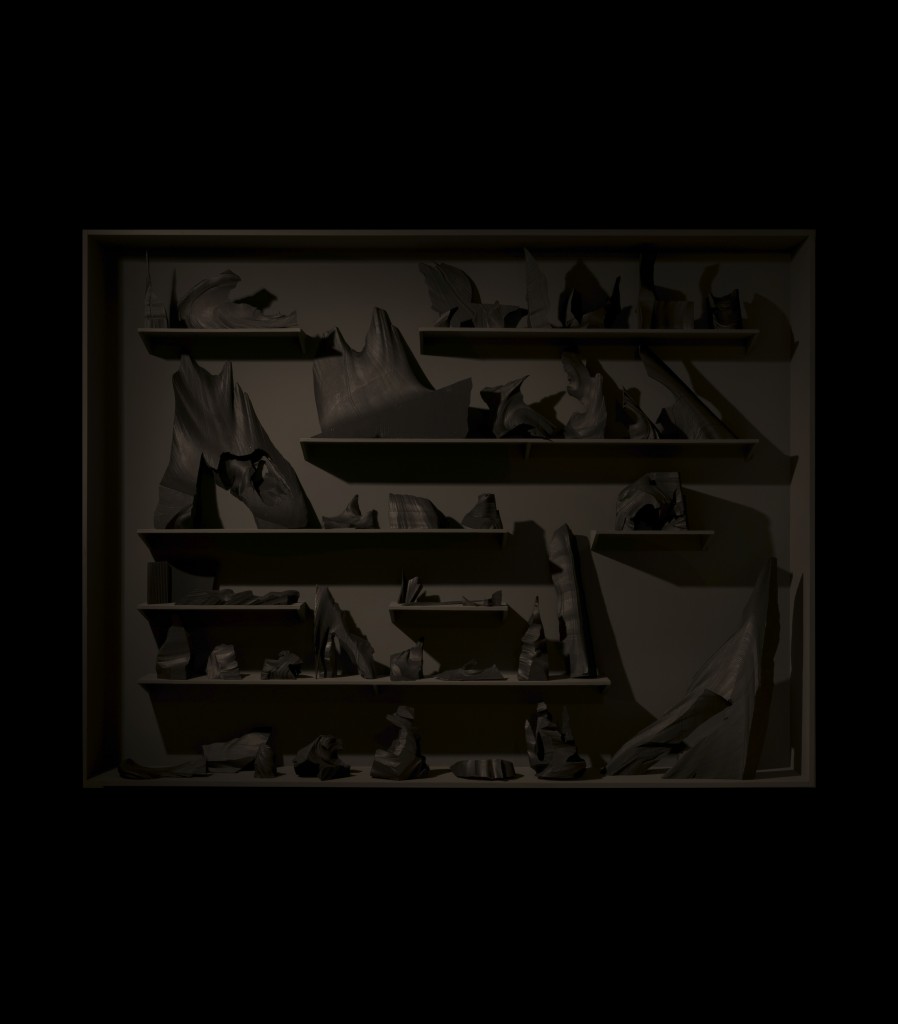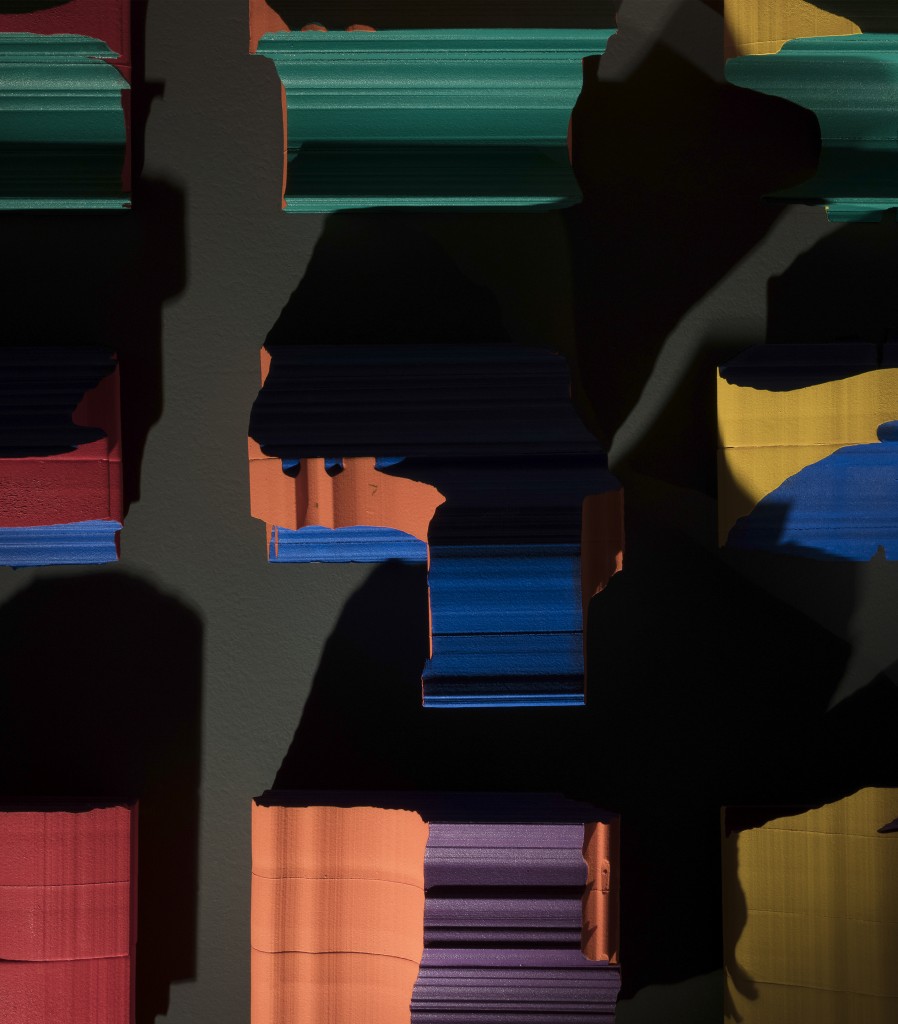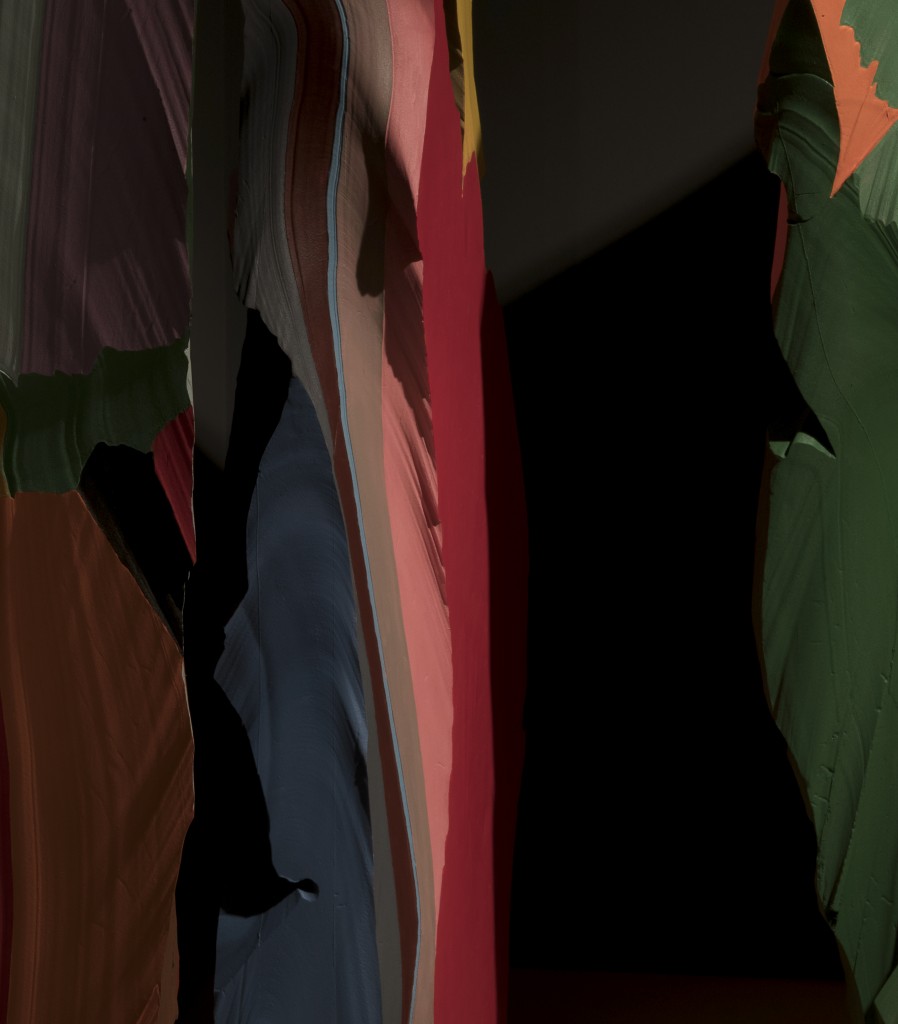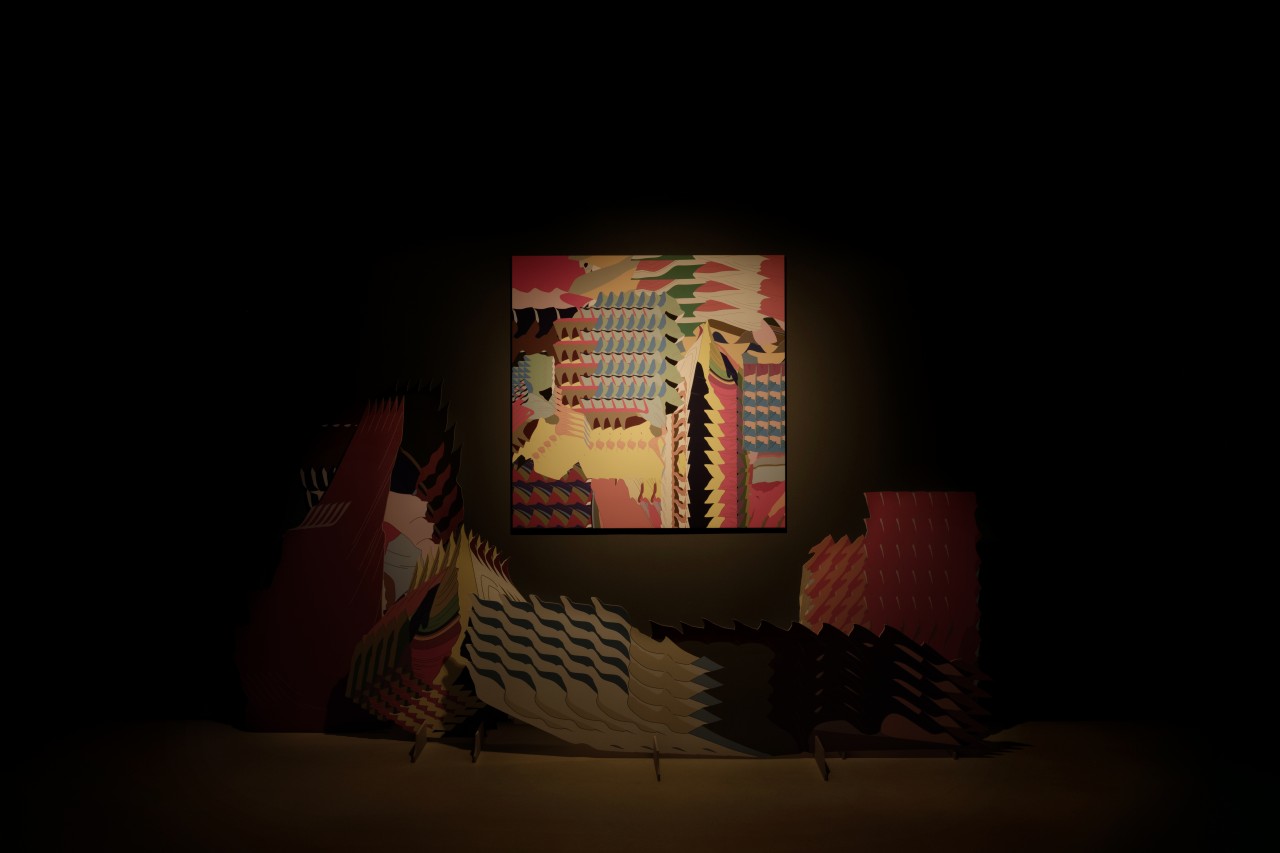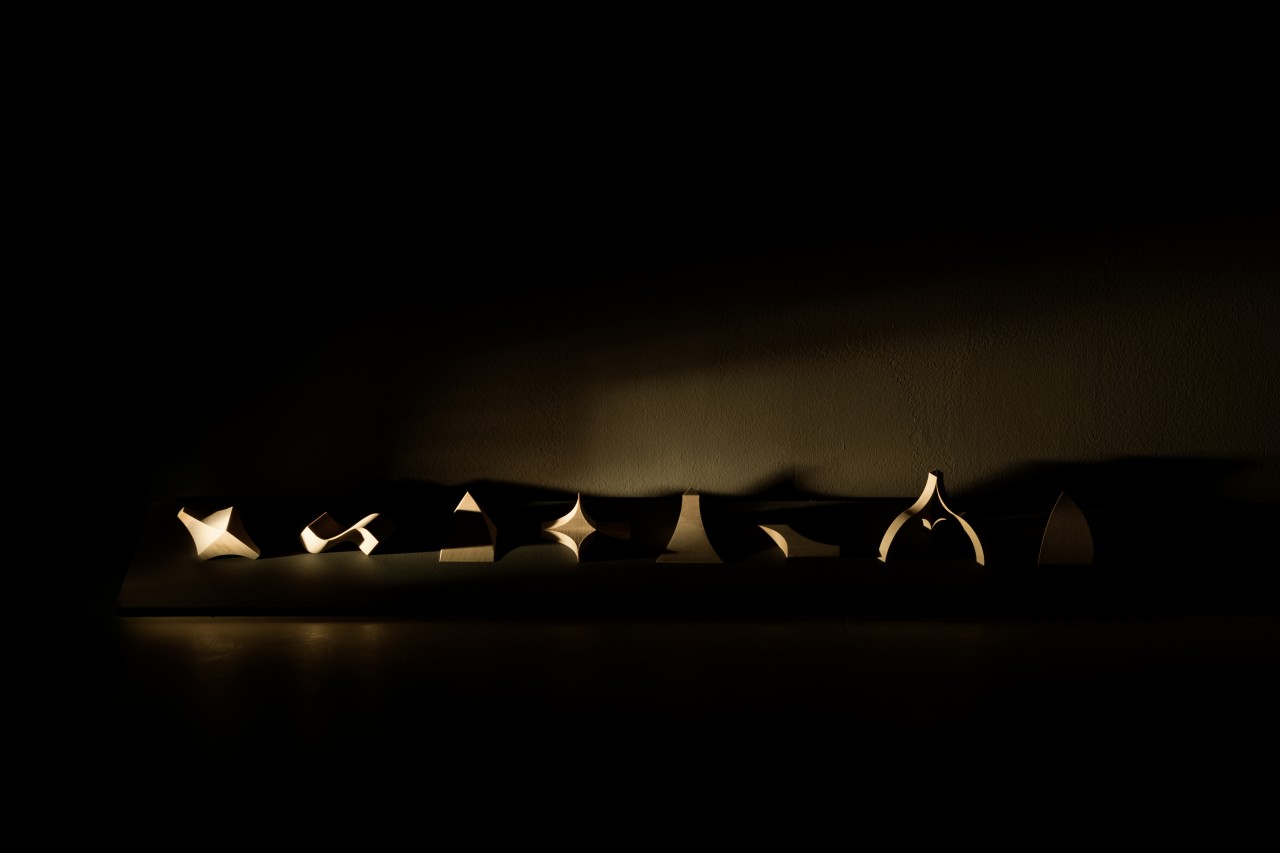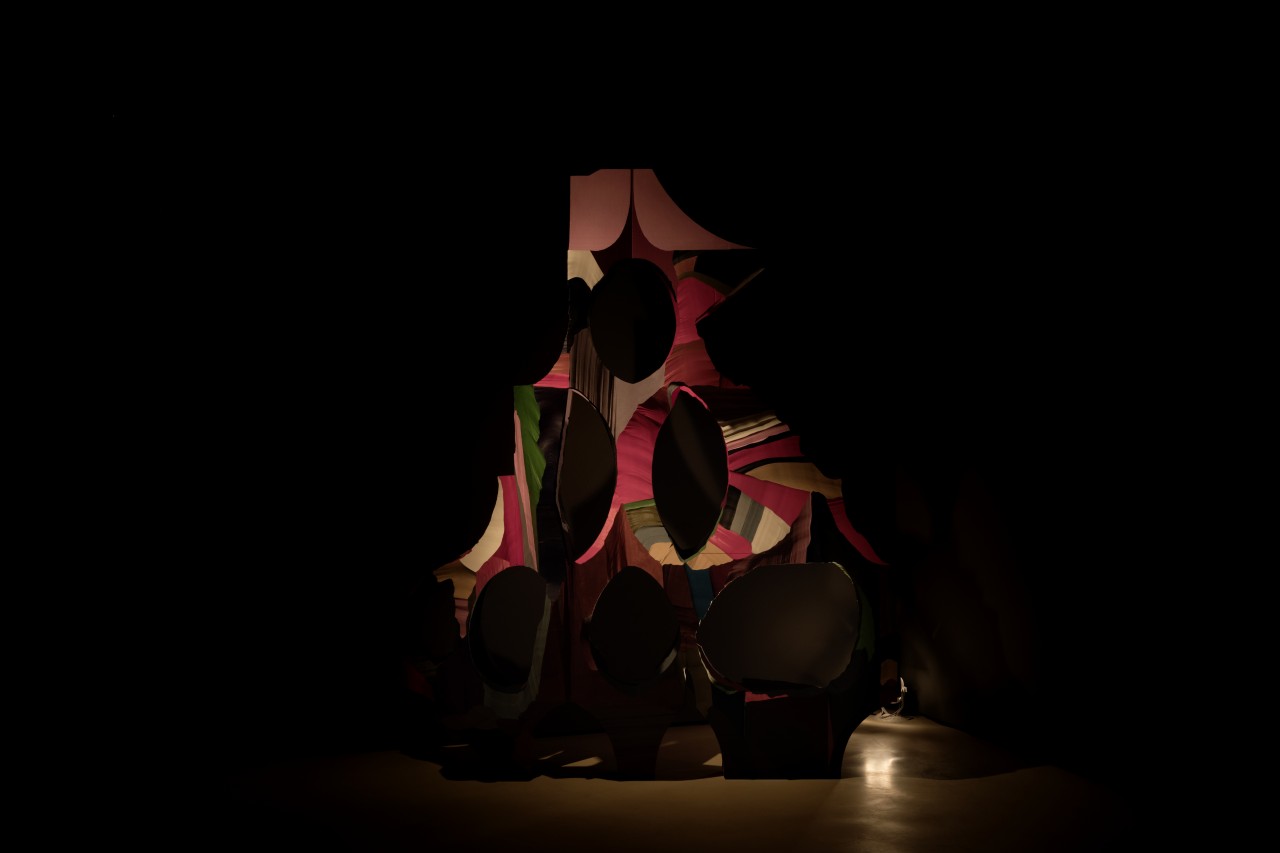Exhibitions
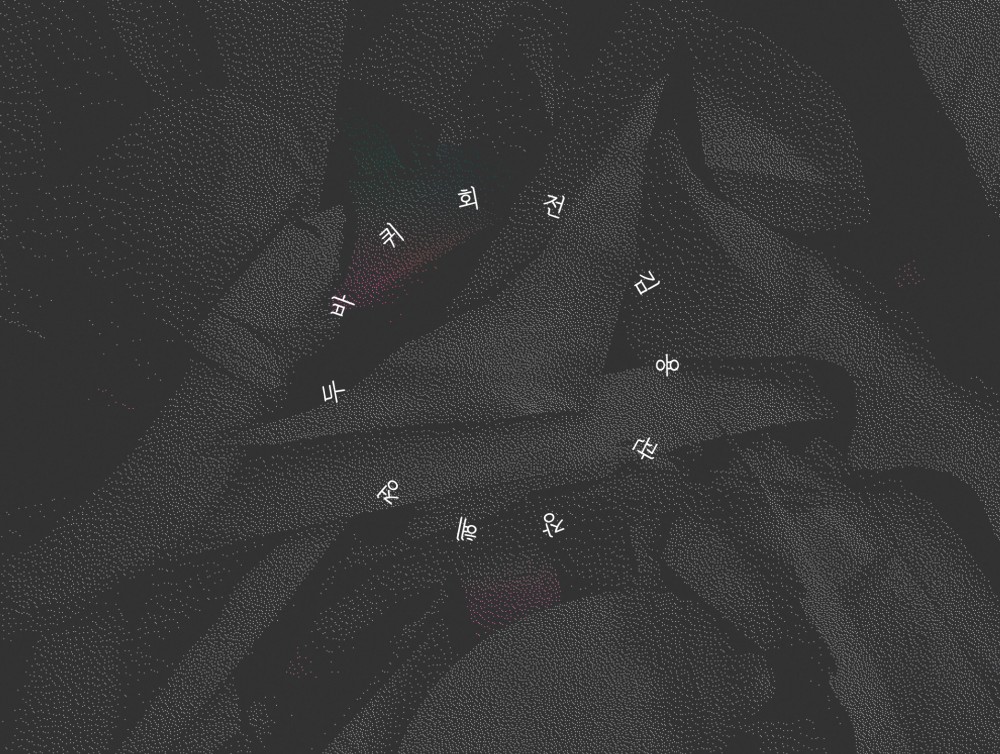
PERIGEE TEAM PROJECT 2018
두 바퀴 회전
2018.12.07. FRI ~
2019.02.10. SUN
<TALK> 2.10(일) 14:00
참여: 김용관(작가), 장혜정(기획자), 김수연(독립기획자), 이빛나(미술비평가)
접수: gallery@perigee.co.kr
두 바퀴 회전
(장혜정 기획자)
이것은 여러 개의 임시적인 만남이 반복적으로 일어나는 상황 그 자체일 수 있다. 가라앉지 않기 위해 계속해서 바다의 표면을 회전하며 부유하는 배가 그려내는 물결, 글과 이미지의 결속과 분리가 되풀이되는 시간, 불명확한 이야기와 깜박이는 불빛 만을 부여받은 관객과 전시의 불완전한 조우, 김용관과 장혜정의 결과를 알 수 없는 실험의 현장. 그리하여 그 만남들을 통해 포착되는 미지의 풍경을 보려고 하는 시도이다.
《두 바퀴 회전》은 꽤 오랜 시간 되풀이 된 김용관과 장혜정이 나눈 대화에서 비롯된다. 그러나 진정 단초가 된 것은 주고받은 내용이 아니라 대화라는 거듭된 행위이다. 지속적으로 이야기를 나눈다는 것은 처음 내린 판단을 변화시키거나, 망각하고 있었던 내재된 생각들을 상기하고, 새로운 것을 발견할 수 있는 시간을 번다는 것과도 같다. 이 둘의 대화도 그러하다. 그러므로 두 바퀴는 김용관과 장혜정일 수 있다. 두 개의 바퀴는 쉬지 않고 돌며 매번 다른 점에서 만나고, 그 미끄러지는 듯한 스침은 일시적이지만 흔들리지 않는 축은 만남을 유지시킨다.
대부분 김용관의 작업들은 그가 상상하거나 만들어낸 가상의 규율과 조건으로 운용되는 미지의 세계를 전제로....
The Enduring Ephemeral Spins
(Hyejung Jang, Curator)
This is a situation per se in which several temporary encounters are recurrent. The waves that are raised up by a ship that continues to float on the sea so as not to sink; the time of constant bonds and splits of texts and images; an imperfect encounter between a viewer with an obscure narrative and flickering light and the exhibition; the scene of experiments by Yongkwan Kim and Hyejung Jang whose results cannot be estimated. This is an attempt to see unknown scene through such encounters.
The Enduring Ephemeral Spinsderived from the conversations that Yongkwan Kim and Hyejung Jang have been having over and over for quite some time. However, the fundamental clue for the work is not the content of their dialogues, but the repetitive action of having a talk. Having a constant conversation insinuates gaining time to change an initial judgment, recalling innate ideas, and discovering something new. The dialogue between them is much the same. Thus the two wheels may refer to Kim and Jang. These wheels turn restlessly and meet at a different point each time, wh....
참여: 김용관(작가), 장혜정(기획자), 김수연(독립기획자), 이빛나(미술비평가)
접수: gallery@perigee.co.kr
두 바퀴 회전
(장혜정 기획자)
이것은 여러 개의 임시적인 만남이 반복적으로 일어나는 상황 그 자체일 수 있다. 가라앉지 않기 위해 계속해서 바다의 표면을 회전하며 부유하는 배가 그려내는 물결, 글과 이미지의 결속과 분리가 되풀이되는 시간, 불명확한 이야기와 깜박이는 불빛 만을 부여받은 관객과 전시의 불완전한 조우, 김용관과 장혜정의 결과를 알 수 없는 실험의 현장. 그리하여 그 만남들을 통해 포착되는 미지의 풍경을 보려고 하는 시도이다.
《두 바퀴 회전》은 꽤 오랜 시간 되풀이 된 김용관과 장혜정이 나눈 대화에서 비롯된다. 그러나 진정 단초가 된 것은 주고받은 내용이 아니라 대화라는 거듭된 행위이다. 지속적으로 이야기를 나눈다는 것은 처음 내린 판단을 변화시키거나, 망각하고 있었던 내재된 생각들을 상기하고, 새로운 것을 발견할 수 있는 시간을 번다는 것과도 같다. 이 둘의 대화도 그러하다. 그러므로 두 바퀴는 김용관과 장혜정일 수 있다. 두 개의 바퀴는 쉬지 않고 돌며 매번 다른 점에서 만나고, 그 미끄러지는 듯한 스침은 일시적이지만 흔들리지 않는 축은 만남을 유지시킨다.
대부분 김용관의 작업들은 그가 상상하거나 만들어낸 가상의 규율과 조건으로 운용되는 미지의 세계를 전제로 한다. 그 가상의 세계는 우리의 눈 앞에 실존하지 않지만, 김용관이 써 내려간 글로써 존재한다. 그의 글 안에 기록된 규칙들은 작은 단위의 모듈로 만들어지고, 임의적으로 배열되고 쌓이며 추상적 이미지로 전환된다. 작가가 최종 도달한 추상적 이미지만을 처음으로 접했던 장혜정은, 대화라는 행위의 반복을 통해 그의 시각 이미지의 저변에 깔려있던 이야기의 힘에 대하여 생각한다. 그리고 그 둘의 관계에 대해서 생각해 본다. 따라서 두 바퀴는 이미지와 텍스트일 수 있다. 중첩되어 있지만 작가가 쌓아 올린 수많은 이미지화 단계에서 가려진 이야기를 이미지와 동일한 선상에서 회전하도록 재배치하기로 한다.
김용관이 2014년 즈음 쓴 <시계방향으로의 항해>라는 미완의 글은 나선형을 그리며 시계방향으로 순환하고 있는 거대한 크루즈선를 배경으로 한다. 이미지의 신과 이야기의 신의 대화로 만들어진 이 크루즈선상의 세계는 외부에서 새롭게 유입되는 자원이 차단된 곳으로, 존재하는 어떤 물건이나 자원도 버리지 못하고 해체와 재조합의 과정이 되풀이되며 유지되는 세계이다. 이 위태로운 세계에서의 삶을 영속하기 위하여 시계방향으로의 회전과 반시계방향으로의 회전을 주장하는 상반된 두 의견이 존재한다. 두 입장은 첨예하게 대립하지만 결국 목적은 하나다. 침몰하지 않는 것. 김용관이 떠올린 가라앉지 않기 위해 끝없이 제자리 돌기 하는 세계를 함께 상상해본다. 그리고 그 세계가 작가를 통해 다시 이미지로 구현되는 모습을 따라가 본다.
전시장에는 <시계방향으로의 항해>를 모티브로 구축한 새로운 세계가 존재한다. 그 세계가 만들어지는 순서는 다음과 같다. 작가는 1800x1600x1000cm 크기의 아이소핑크 육면체를 원형으로 삼는다.
1. 스티로폼과 아이소핑크를 임의로 쪼개며, 파편적인 조각물을 만든다.
2. 1번 조각물을 모방하며, 조금씩 다르거나 더 선명한 조각물을 만든다.
3. 2번 조각물의 형태를 여러 시점에서 관찰하고, 특정한 시점의 실루엣 모양으로 납작한 유리 조각물을 만든다.
4. 다시 두께를 부여하고, 조각물을2개씩 교차시켜 교집합이 되는 부분 만을 남긴다.
5. 1~4번의 과정에서 무의식적으로 반복하는 조각 방식과 형태를 변주하며 또 다른 조각물을 만든다.
6. 5번 조각물의 표면과 결을 관찰하며, 공통으로 등장하는 규칙적 특징을 찾아 사진으로 담는다.
7. 5번 조각물을 단순한 모티브로 전환하고, 동일한 이미지를 증축 또는 반복하며 새로운 이미지를 탐구한다.
8. 1~7번의 과정에서 발견되는 시각적 특징들을 규칙/조건/단위로 삼아 모듈의 단위로 응축 시킨다.
9. 모듈 중 하나를 선택하고 임의로 쌓아 올리며 조각물을 만들고, 그 표면을 깎는다.
10. 3D 프로그램을 사용하여, 표면을 깎기 전 상태의9번 조각물을 구부리기/늘리기/잡아당기기 만으로 위상학적으로 동형인 조각물을 만든다. 그리고 표면을 깎는다. 이 조각물은 그가 상상하는 다음 세계를 구축하는 원형이 된다.
작가에 의해 한없이 해체되고 변주되고 때로 비약되는 이미지는 미지를 향한 명확한 방향을 지시하거나 세계의 모습을 제시하는 것과는 거리가 멀다. 도리어 그 반대이다. 밝음 보다는 어둠의 시간이 더 길게 느껴지는 공간에서는 아무리 애를 써도 전체를 볼 수 없고, 대신 의지하게 되는 내레이션 역시 길은 안내하기보다는 방향 감각을 더욱 상실하게 만들지도 모른다. 하지만 이것은 길을 잃은 것이 아니다. 미지는 말 그대로 “알지 못함”이다. 이 알지 못하는 세계는 어쩌면 규정되거나 관습적인 방식으로는 알아차리지 못하는 것이 당연할지 모른다. 그러니 익숙한 태도로 이미지의 표피를 더듬으려 애쓰기 보다는, 조타를 잡았던 손을 놓고 물결의 흐름에 따라 배가 항해하도록 두는 시도가 필요하다. 그것이 나와 만나 어떠한 방향으로 회전하게 될지는 아직 알 수 없다.
(Hyejung Jang, Curator)
This is a situation per se in which several temporary encounters are recurrent. The waves that are raised up by a ship that continues to float on the sea so as not to sink; the time of constant bonds and splits of texts and images; an imperfect encounter between a viewer with an obscure narrative and flickering light and the exhibition; the scene of experiments by Yongkwan Kim and Hyejung Jang whose results cannot be estimated. This is an attempt to see unknown scene through such encounters.
The Enduring Ephemeral Spinsderived from the conversations that Yongkwan Kim and Hyejung Jang have been having over and over for quite some time. However, the fundamental clue for the work is not the content of their dialogues, but the repetitive action of having a talk. Having a constant conversation insinuates gaining time to change an initial judgment, recalling innate ideas, and discovering something new. The dialogue between them is much the same. Thus the two wheels may refer to Kim and Jang. These wheels turn restlessly and meet at a different point each time, while their passing is ephemeral, but the encounters are maintained by a firmly fixed axis.
Kim’s works are mostly based on an unknown world that is operated by the imaginary regulations and conditions he has pictured. This imaginary world is inexistent but exists within the text Kim wrote. The regulations recorded in his text are made into a small unit of modules that are arranged and accumulated arbitrarily and altered into abstract images. Jang who has been only received the final abstract images of Kim, considers the power of the narratives couched within his visual images through the act of repetitive conversation. She also takes into account the relationship between the two. The two wheels can thus be regarded as image and text. She rearranges the countless narratives hidden behind his visual images so that they may spin on the same line.
A Voyage Clockwise, an unfinished piece of writing Kim wrote around 2014, features a giant cruise ship that circulates clockwise in a spiral. The world of the cruise ship forged through a conversation between the god of images and the god of narratives is one in which no more resources enter it and no things or resources are thrown away; it is only maintained through a recurring process of deconstruction and reconstruction. There are two conflicting opinions about turning clockwise or anti-clockwise in order to perpetuate life in this precarious world. The two assertions challenge one another but ultimately seek the same objective: not to be sunk. Jang imagines this world Kim has created that turns endlessly as not to be sunk. She follows how this world is reconstructed as images by the artist.
On display at the exhibition is a new world forged with A Voyage Clockwiseas a motif. The order in which this world is molded is as follows. The artist uses an Iso Pink foam the size of 1800 x 1600 x 1000 cm as the foundation for his work.
1. Make a fragmentary sculpture by arbitrarily carving objects out of Iso Pink.
2. Make a sculptural object that is a bit different or more concrete by copying the object no.1.
3. Observe the sculptural object no.2 at various angles and make a flat glass sculpture in the form of a silhouette seen at a specific optical angle.
4. Give thickness to it again and cross two objects and leave the intersecting part intact.
5. Make another sculpture through variations of sculptural methods and forms that are repeated in the process of Steps 1-4.
6. Observe the surface and grain of the sculptural object no. 5 and take photographs of the features common to both.
7. Turn the object no.5 into a simple motif, and explore new images through a proliferation or repetition of the same image.
8. Condense the visual features discovered during Steps 1-7 into a unit of modules based on regulation, condition, and unit.
9. Select one of the modules, heaping up it randomly to make a sculptural object, and carve its surface.
10. Using a 3D program, make a sculptural object of the same shape and topology only by bending, stretching or pulling the sculptural object no. 9 before its surface is carved. Then, carve out the surface. This sculpture is the original form for him to construct the following imagined world.
The images Kim has deconstructed, altered, and proliferated are distanced from any apparent direction or any suggested aspect of the world. Indeed, it is quite the contrary. No matter how hard we try, we cannot see the whole space in which the time of darkness feels longer than the time of brightness, and the narrations we rely on may also cause us to lose our sense of direction instead of guiding us. However, this does not mean we get lost. The unknown is literally “not to know.” We may very well be unable to recognize this unknown world in a defined, conventional manner. Therefore, we need an attempt to let a ship make a voyage with the currents rather than striving to grope the surface of images in a familiar attitude. The direction in which it will spin when meeting with us is still uncertain.



